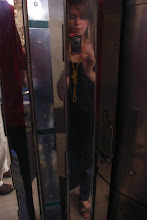Purveyors of Cath Kidston knock-off vintage-a-rama needn't lose sleep about the credit crunch if the crowds at last week's Country Living Christmas Fair at the Business Design Centre, Islington, are anything to go by. The place was teaming with hoardes of housewives and reluctant husbands escaping the home counties for the day to pick up some festive faux-rustic farmhouse style, recreated in urban central London (a concept that never fails to seem somewhat macabre). Putting aside the numerous Cath-esque stalls and granny-knit cardigans, there were, however, several rather interesting companies on show. Along with some familiar faces, including Jan Constantine (one of the biggest needlepoint success stories, with her range of gorgeous union jack and 'love' cushions), new brands such as Lasso The Moon (see pic below) stood out for all the right reasons, with their beautifully presented selection of original, handcrafted products and eco credentials.

Unsurprisingly, vintage fabrics featured heavily in the work of many exhibitors. Acorn & Will showed a somewhat whimsical collection crafted from vintage fabrics and buttons used to make adorable hairslides and toiletry bags, whilst the highly innovative Refab touted rather funky little doorstops made from recycled fabric offcuts, which are sold 'flat packed' for the owner to fill with rice. Poppy Treffry pimped up her fabrics via the craft of applique, embellishing cutesy designs along a cupcake vibe onto tea cosies and the like, even using her fabric remnamts to make tiny pin badges. Personalised goods seemed to be a big theme of the day with many companies championing letters and nameplaques as decorative home gifts, the most prolific of these being Jonny's Sister, whose Love Letters are available in an array of pretty paisley and gingham prints, and even in soap form. Dee Puddy added a level of practicality to the trend with these ceramic porcelain labels, which the OCD labeller in me is quite obsessed with (see picture). Stunning ceramics were also to be found at Luna, where gorgeous votives and lights featured a delicate yet streamlined punched letters design. Spell out the name of your beloved or, for the serious crafty romantic, there's always the specially designed 'marry me' votive set (altogether... ahhhhhhhh.)
Personalised goods seemed to be a big theme of the day with many companies championing letters and nameplaques as decorative home gifts, the most prolific of these being Jonny's Sister, whose Love Letters are available in an array of pretty paisley and gingham prints, and even in soap form. Dee Puddy added a level of practicality to the trend with these ceramic porcelain labels, which the OCD labeller in me is quite obsessed with (see picture). Stunning ceramics were also to be found at Luna, where gorgeous votives and lights featured a delicate yet streamlined punched letters design. Spell out the name of your beloved or, for the serious crafty romantic, there's always the specially designed 'marry me' votive set (altogether... ahhhhhhhh.)

Strong crafty touches abounded from Bay Design, namely their lovely range of lampshades customised with vintage tape measures and buttons as decorative trim, or hand-painted with sweet Cath Kidston (who else?) style spots. My personal favourite, however, is the ruched shade (see below), created entirely from the same trim laid flat throughout the body of the shade but gathered to create the bottom trim - fab idea for making the most of a ribbon or fabric trim if you don't have a standard trim to finish a job. Further craft big-ups were to be found at Buttonbag, whose fantastic sewing craft kits should be enough to lure mini-hackers away from Guitar Hero long enough to make their own toys and games. Delightfully old-skool, Craft Hacker loves this retro owl family kit, plus the Victorian classic theatre-in-a-box, repackaged for 21st century craftsters.


Illustration proved ever-popular and looked fresh against all the other vintage offerings. Favourites included work by Made in Hastings, a sweet collaborative hailing from, errr, Hastings, with resident illustrators, ceramicists and print designers producing a range of homewares, clothing and children's gifts with a handspun vibe. Jam Tart also featured retro-style line drawings of campervans and Parisian cafe scenes adorning tea towels, oven gloves and ceramics.

An eco shout-out goes in particular to Handcrafted Wood, with its stylish range of (funnily enough) handcrafted wood decorations and gifts, all created from reclaimed wood local to designer Carol Ridler. Also on an eco tip, Dream Acres combines the worlds of crafting and herbs with its pretty scent-filled sleep sacks and pet scent pouches, alongside decorative gifts such as these fabric flowers (see below) - a great idea for reusing old fabric scraps. Finally, cosy on down for winter with the rather lovely collection from John Arbon Textiles - featuring tea cosies and bedsocks handspun from British farmed alpaca wool spun at the regenerated 200 year old Coldharbour Mill in Devon, a smug snuggle is guaranteed.















